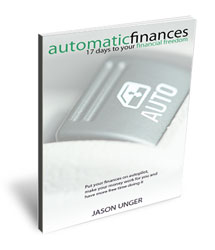
This is a guest post by Philip Taylor, owner of PT Money: Personal Finance. Check out his blog to discover more ways to save money, make extra money, and spend money wisely. See his latest review of the best small business credit cards.
The dictionary definition of the word “bond” is something that binds or fastens, or a feeling of friendship between two people or groups.
Naturally, the world of finance isn’t all that keen on ineffable terms like something or a feeling, so here, bonds are rather more precisely defined as a debt security, or simply an IOU.
When you invest in bonds, you are essentially lending money to the bond issuer, who promises to pay you interest – called the Coupon – and repay the principal by a set date – when the bond reaches maturity. Bond issuers are usually corporations with specific projects to finance or governments who need to finance day-to-day expenditures.
So, why should you invest in bonds rather than in the stock market?
Generally speaking, bonds are a safer bet than stocks. They are less volatile than stocks and the coupon payments are often higher than most dividends, so you don’t have to place a good bet to make money on bonds, like you do when buying a company’s stocks. Also, a bond’s coupon payments are usually fixed, so they can represent a steady source of income.
When a bond reaches maturity, you are guaranteed to have the full amount of your investment returned to you. There is the risk that the issuing company will go bankrupt in the meantime, but bondholders are usually ahead of shareholders when it comes receiving cash from the fire sale of a bust company. And you can always negate that risk by investing in government bonds.
U.S. Savings Bonds are widely considered to be one of the safest places to put your money, plus the coupon payments are often tax-exempt.
Though not as liquid as stocks, you can usually release your cash by selling your bond before it reaches maturity. The only problem here is if interest rates have risen since your initial investment, your bond won’t be worth as much because higher yielding bonds will be available elsewhere.
But of course, the opposite also applies and if interest rates fall then your bond will be worth more and you can sell it for a higher price.
There are three different types of bonds, based on the maturation period.
- Short-term bonds: lasting from one to five years, these tend to have the lowest coupon rate
- Medium-term bonds: last typically from five to 10 years;
- Long-term bonds: these tie up your money for 10 to 30 years with a corresponding higher coupon rate
The high coupon rates of long-term bonds might be tempting, but since inflation can wipe out the value of these payments, it is not advisable to invest all of your funds in them. Most financial advisors will recommend a mix of fixed-term bonds, alongside stocks, in order to ensure proper asset allocation and more consistent and predictable earnings from your investments.
If you decide to invest in bonds, talk to your portfolio manager about purchasing individual bonds on the over-the-counter (OTC) market. Smart bond investments might even form that other kind of bond between you.



